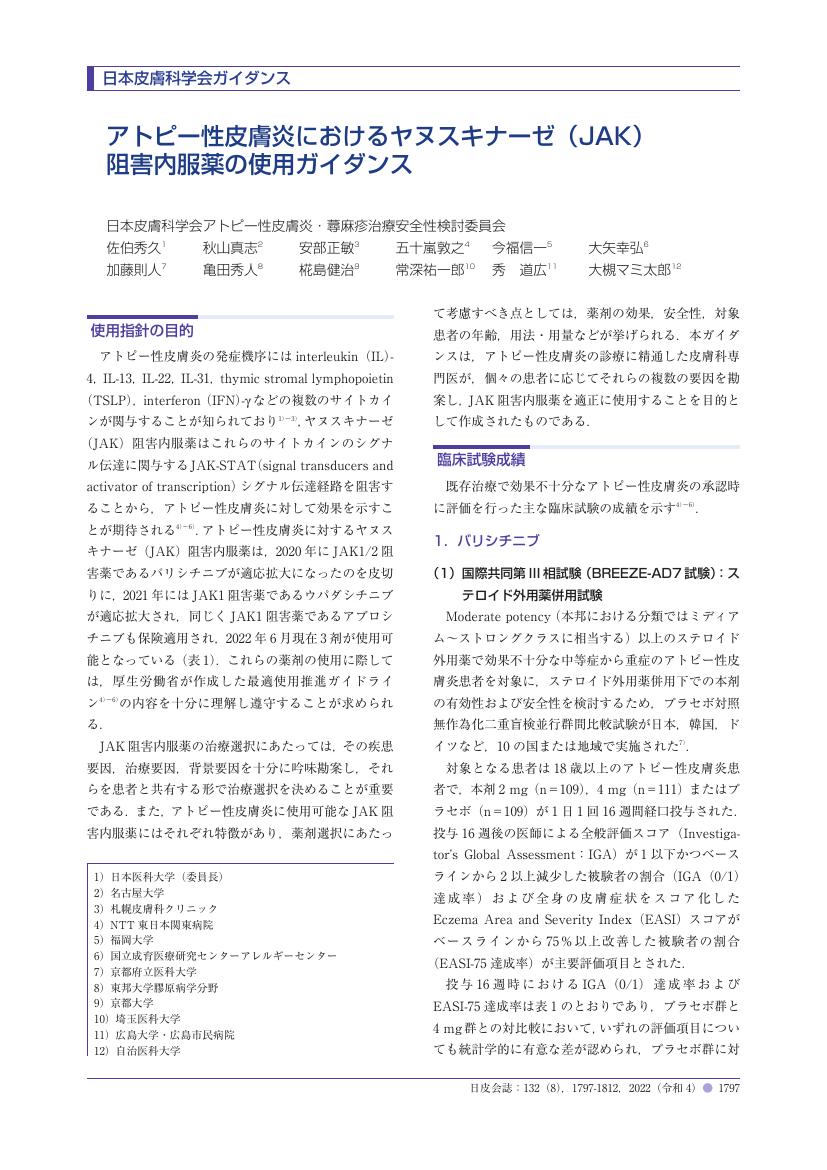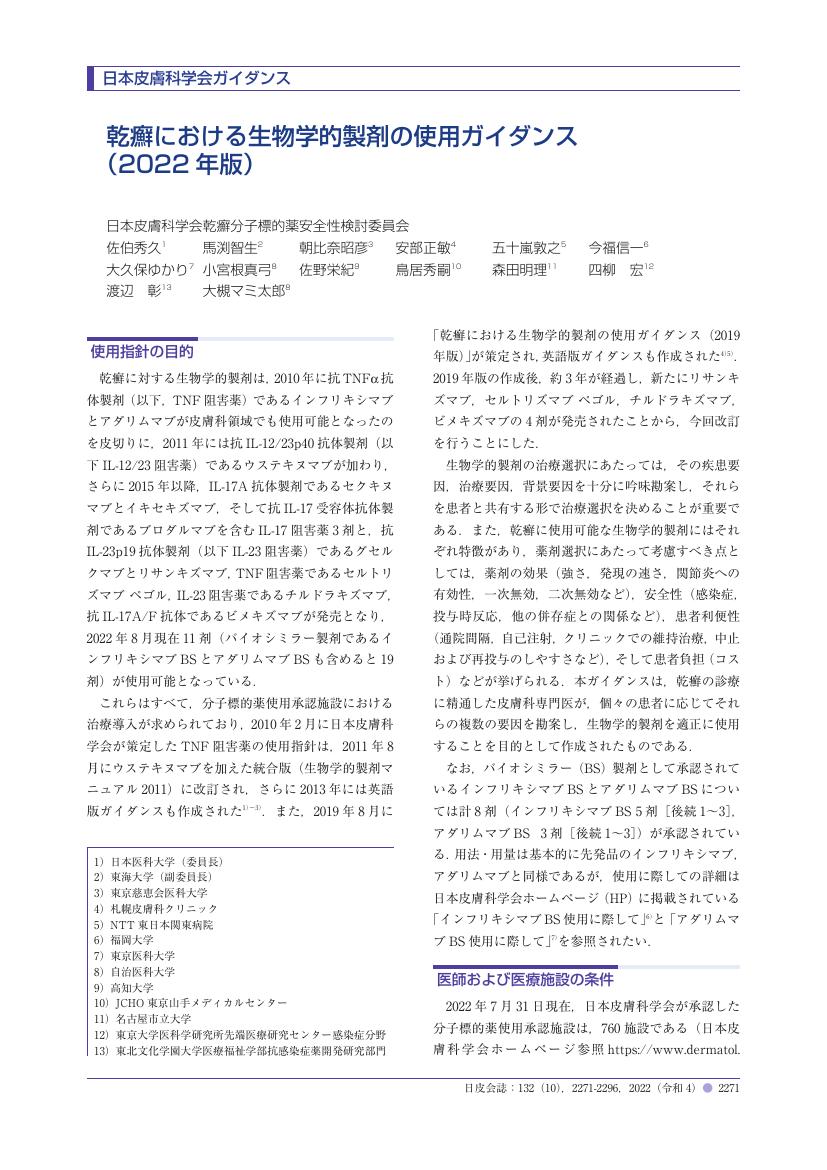2 0 0 0 OA 垂直性歯根破折歯の保存的治療について
- 著者
- 前田 宗宏 五十嵐 勝
- 出版者
- 一般社団法人 日本歯内療法学会
- 雑誌
- 日本歯内療法学会雑誌 (ISSN:13478672)
- 巻号頁・発行日
- vol.42, no.2, pp.83-90, 2021 (Released:2021-06-15)
- 参考文献数
- 71
抄 録 : 垂直性歯根破折 (Vertical Root Fracture : VRF) が長期間放置されると, 当該歯根の破折線に沿って歯周組織の広範な破壊が進行する. このため, 単根歯であれば抜歯, 大臼歯ではルートアンプテーションやヘミセクションなどの対応が普遍的にとられてきた. 1980年代以降では, 4-META/MMA-TBBレジンをはじめとする接着修復材料の開発が進むとともに, 破折歯根や支持歯槽骨の状態により, 破折歯根を口腔内で接着する方法, 破折歯根の口腔外接着再植法といったVRFの保存的治療法が試みられ, さまざまな知見が得られてきた. 歯周組織の炎症が拡大する前であれば保存的治療法の予後も良好となることが報告されている. 加えて, 近年普及が著しいCBCT, 歯科用マイクロスコープ, 超音波振動装置などを応用することで, 新たな展開も期待されている. 歯内療法医としてはVRF治療の現状を踏まえ, 可能な限り歯の延命を図ることが重要と考える. 本稿ではVRFの今日的な保存的治療についてまとめてみた.
- 著者
- 五十嵐 里菜 馬場 悠太 平林 雅和 伊從 慶太 大隅 尊史
- 出版者
- 日本獣医皮膚科学会
- 雑誌
- 獣医臨床皮膚科 (ISSN:13476416)
- 巻号頁・発行日
- vol.25, no.3, pp.153-156, 2019 (Released:2019-09-20)
- 参考文献数
- 6
- 被引用文献数
- 1
ブリティッシュ・ショートヘアー,4歳4ヶ月齢,未去勢雄が両外耳道および耳介周囲に多発性の黒〜灰色,ドーム状の隆起性病変を呈した。病理組織学的検査によって,Feline ceruminous cystomatosisと診断された。自宅での点耳治療が困難であったため,病院での耳洗浄および1%フロルフェニコール,1%テルビナフィン,0.1%ベタメタゾン酢酸エステル配合の点耳ゲル剤による治療を計3回実施したところ,約3ヶ月以内に病変の著しい退縮を認め,最終投与の約6ヶ月後に至るまで再発を認めなかった。
2 0 0 0 OA 簡易懸濁法におけるアルカリ性薬剤併用時の低用量アスピリンの安定性の検討
- 著者
- 清水 幸雄 柚原 亜美 矢野 勝子 北川 佳奈子 飯田 純一 五十嵐 信智 伊藤 清美 落合 和 折井 孝男 杉山 清
- 出版者
- 一般社団法人日本医療薬学会
- 雑誌
- 医療薬学 (ISSN:1346342X)
- 巻号頁・発行日
- vol.36, no.1, pp.31-36, 2010 (Released:2011-12-24)
- 参考文献数
- 17
- 被引用文献数
- 6 4
There is concern about the possibility of degradation of the active substance as a result of pH changes when making suspensions of several drugs together by the simple suspension method.However,this has been investigated by few researchers.In the present study,we focused our attention on aspirin since it is known to be hydrolyzed at high temperatures or with elevation in pH.In this study,a Bufferin® 81 mg Tablet was suspended alone or together with alkaline drugs by the simple suspension method,and its stability evaluated.When in the suspension alone,the Bufferin® 81 mg Tablet was stable for 5 hours and the amount of salicylic acid (hydrolyte of aspirin) produced was negligible.On the other hand,when it was suspended together with alkaline agents (magnesium oxide tablet/powder,or lithium carbonate tablet),the residual content of aspirin decreased to 77-84% in ten minutes.The pH of the suspensions containing both the Bufferin® 81 mg Tablet and alkaline agents ranged from about 9 to 10 showing that alkalinity had been enhanced as compared with the suspension of Bufferin alone whose pH was 4.It has been reported that in low-dose aspirin therapy,platelet aggregation inhibition is unstable if the daily aspirin dosage is reduced to less than 75 mg.However for Bufferin® 81 mg Tablet,the results of the present study suggested that the beneficial effect of low-dose aspirin therapy might not be fully achieved it were suspended together with alkaline agents by the simple suspension method.
2 0 0 0 OA 法律で見るインドネシアの新社会保障制度
- 著者
- 藤並 祐馬 五十嵐 久美子
- 出版者
- 日本国際保健医療学会
- 雑誌
- 国際保健医療 (ISSN:09176543)
- 巻号頁・発行日
- vol.30, no.2, pp.103-114, 2015-06-20 (Released:2015-07-14)
- 参考文献数
- 11
インドネシアでは、憲法第28H条で最低限の生活を行なうために社会保障を受ける権利を有していることを述べるとともに、第34条で国に全ての国民に社会保障を提供し、適切な保健サービスを提供する義務を課している。インドネシア政府は、これら国民の権利を守り国家の義務を果たすため、これまでに労働者、軍・警察、公務員、雇用者、自営業者、低所得者を対象とした社会保障制度を整備してきた。しかし、対象毎に異なる制度が導入され、その補償内容には差があった。また、これらの対象及びそれらの家族以外の国民には、公的な社会保障が提供されていない状況であった。 そのような中、憲法で保障された国民の権利と国家の義務をより強固なものとして実施するために、全国民を対象とした新社会保障制度が、2014年より段階的に導入されることとなった。 新制度では、6ヶ月以上インドネシアに居住する外国人も強制加入の対象となっているが、英語などの資料が少なく、導入時点での在留外国人への周知という点では必ずしも十分でない点が見られる。 新社会保障制度では、大きく保健関連と労務関連の2つの分野に分けられ、まずは保健関連の社会保障制度として国民健康保険が2014年1月から導入された。2013年の医療保障制度対象者は民間医療保険も含めて国民の69%であり、その対象の属性に応じて4種の制度に大別されていた。新国民健康保険制度では、多種多様な健康保険制度を一つの制度に統合し、2019年までに全国民を対象とするユニバーサル・ヘルス・カバレッジを目指している。新制度では、2005年から導入された貧困層を対象とした医療保障制度(JAMKESMAS)を基盤としており、一次医療の重点化及び診療報酬制度の導入が、その特徴である。保険適用を受けるためには必ず一次医療施設で受診することが義務づけられた。このため新制度が広く受入れられるためには、一次医療施設で提供されるサービスの質次第でこれまで病院で保健医療を受けていた人にも受入れられる制度になるかどうかが大きな鍵を握っている。 本稿では、これまでのインドネシアの社会保障制度を振り返るとともに、各法令に記載されている新社会保障制度の規定について、2014年に先行して始まった国民健康保険制度を中心にまとめる。最後に、法令で定められた制度を実施する上での課題について考察する。
2 0 0 0 OA アトピー性皮膚炎におけるヤヌスキナーゼ(JAK)阻害内服薬の使用ガイダンス
2 0 0 0 OA セフメタゾールの臨床的有効用量とGiusti-Hayton法による用量調節の妥当性の検討
- 著者
- 陳内 博之 豊田 真史 安藤 志帆 五十嵐 玲子
- 出版者
- 一般社団法人日本医療薬学会
- 雑誌
- 医療薬学 (ISSN:1346342X)
- 巻号頁・発行日
- vol.48, no.2, pp.79-86, 2022-02-10 (Released:2023-02-10)
- 参考文献数
- 22
Cefmetazole (CMZ) is a widely used antimicrobial agent against various infectious diseases. Few studies have determined the appropriate daily dose, and the dose adjustment criteria based on renal function are unclear. Therefore, this study evaluated the clinically effective dose of CMZ and the validity of dose adjustment using the Giusti-Hayton (G-H) method. Patients who received CMZ at Ebara Hospital from April 2019 to March 2021 were included. The basic daily dose was set at 4 g, which is the maximum dose approved in Japan, and a dose adjustment standard table was prepared with variables calculated using the G-H method. The patients were grouped according to whether their dosage of CMZ was adjusted using G-H method or not into the G-H and non-G-H groups. We set the primary endpoints as the efficacy and safety of CMZ, and the secondary endpoint as the pharmacokinetics/pharmacodynamics parameter (PK/PD parameter). There were 107 and 99 target cases in the G-H and non-G-H groups, respectively. The G-H group included several elderly people with a poor prognosis for infectious diseases; however, there was no significant difference in the efficacy and safety of CMZ between the groups. The time above MIC was significantly higher in the G-H group. Therefore, dose adjustment using the G-H method, based on a dose of 4 g/day, can be useful in terms of PK/PD parameters. Moreover, it has been shown to be highly effective and safe. Thus, the results of this study may help in determining the dose and dose adjustment of CMZ.
2 0 0 0 DNA鑑定による赤肉系リンゴ新品種'紅の夢'の親の推定
- 著者
- 五十嵐 恵 初山 慶道 松本 和浩 塩崎 雄之輔
- 出版者
- 弘前大学農学生命科学部
- 雑誌
- 弘前大学農学生命科学部学術報告 (ISSN:13448897)
- 巻号頁・発行日
- no.13, pp.7-13, 2011-02
'紅の夢'は弘前大学藤崎農場で育成されたリンゴ新品種である。このリンゴの果実の特徴は濃い暗紅色の果皮と印象的な淡紅色の果肉を持つことである。'紅の夢'は、'紅玉'と'スターキングデリシャス'との交配により作出されたと記録されていたが、DNAマーカー解析によると、'スターキングデリシャス'は交配親ではないことが明らかになった。さらに、SSRおよびSTSマーカーを用いた遺伝子型解析により、'紅の夢'の親品種のうち一方は'紅玉'、もう一方は藤崎農業に植栽されている樹(赤肉親候補A)である可能性を示した。このリンゴ樹は'エターズコールド'とされていたが、SSR遺伝子型を調査したところ大半がオリジナルの遺伝子型とは異なることから、'エターズゴールド'ではないことが明らかになった。PCRベースのS-RNase解析により、'紅の夢'のS遺伝子型は、S3S7と既存品種の'つがる'や'未希ライフ'と同一であることが明らかになった。この結果から、'紅の夢'は日本で栽培されている多くの品種と交雑和合性があると考えられた。
2 0 0 0 OA 終末期がん患者の口腔内不快事象に対する蜂蜜併用半夏瀉心湯の含嗽による有効性の検討
- 著者
- 村上 敏史 五十嵐 麻美 宮野 加奈子 上園 保仁 八岡 和歌子 上野 尚雄 鈴木 恵里 石井 妙子 松田 裕美
- 出版者
- 日本緩和医療学会
- 雑誌
- Palliative Care Research (ISSN:18805302)
- 巻号頁・発行日
- vol.14, no.3, pp.159-167, 2019 (Released:2019-07-16)
- 参考文献数
- 28
- 被引用文献数
- 1
【目的】終末期がん患者の口腔不快事象に対する半夏瀉心湯の含嗽の有効性を検討した.半夏瀉心湯に蜂蜜を混和することで症状緩和の有効性およびコンプライアンスが向上するか検討した.【方法】対象症例を無作為に振り分けたうえで,半夏瀉心湯または蜂蜜併用半夏瀉心湯含嗽を2週間施行した.開始前後で口腔乾燥,口臭,口内炎,口腔内不快感,含嗽のコンプライアンスについて評価を行った.【結果】対象症例は22例であった.半夏瀉心湯含嗽による口腔内乾燥度の改善,呼気中硫化水素の減少が認められたが,含嗽による臨床効果や含嗽のコンプライアンスと蜂蜜併用の有無に大きな関連は認められなかった.【結論】終末期がん患者の口腔不快事象に対する半夏瀉心湯の含嗽は,患者の生活の質向上に寄与することが示唆されたが,蜂蜜の使用についてはとくに大きな利点は認めなかった.口腔内不快事象を緩和させることは終末期がん患者のケアに有効であると考えられる.
2 0 0 0 OA 動的モード分解による多次元時系列解析
- 著者
- 大道 勇哉 五十嵐 康彦
- 出版者
- 日本神経回路学会
- 雑誌
- 日本神経回路学会誌 (ISSN:1340766X)
- 巻号頁・発行日
- vol.25, no.1, pp.2-9, 2018-03-05 (Released:2018-05-07)
- 参考文献数
- 13
多次元時系列データの中に潜む本質的な情報を取り出す手法として,動的モード分解と呼ばれる手法が注目されている.動的モード分解は流体解析の分野において提案された手法であるが,データの時空間的な特徴構造を抽出できるという利点から,今後さまざまな分野の研究において成果を生み出していくことが期待される.本稿では,動的モード分解の基本的なアルゴリズムと適用例について簡単に紹介する.
2 0 0 0 OA モデルナ社の新型コロナワクチンに混入した異物に関する調査
- 著者
- 柴田 寛子 野村 祐介 河上 強志 山本 栄一 安藤 大介 内山 奈穂子 徳本 廣子 小出 達夫 迫田 秀行 吉田 寛幸 阿部 康弘 袴塚 高志 五十嵐 良明 蓜島 由二 石井 明子 伊豆津 健一 本間 正充 合田 幸広
- 出版者
- 公益社団法人 日本薬学会
- 雑誌
- YAKUGAKU ZASSHI (ISSN:00316903)
- 巻号頁・発行日
- vol.142, no.8, pp.867-874, 2022-08-01 (Released:2022-08-01)
- 参考文献数
- 5
- 被引用文献数
- 1
Particular batches of Moderna mRNA Coronavirus Disease 2019 (COVID-19) vaccine were recalled after foreign particles were found in some vaccine vials at the vaccination site in Japan in August 2021. We investigated the foreign particles at the request of the Ministry of Health, Labour and Welfare. Energy dispersive X-ray spectroscopy analysis suggested that the foreign particles found in the vials recalled from the vaccination sites were from stainless steel SUS 316L, which was in line with the findings of the root cause investigation by the manufacturer. The sizes of the observed particles ranged from <50 μm to 548 μm in the major axis. Similar foreign particles were also detected in 2 of the 5 vaccine vials of the same lot stored by the manufacturer, indicating that the foreign particles have already been administered to some people via vaccine. Observation of the vials of the same lot by digital microscope found smaller particles those were not detected by visual inspection, suggesting that more vials were affected. Contrarily, visual inspection and subvisible particulate matter test indicated no foreign particles in the vials of normal lots. Possible root cause and strategies to prevent such a deviation were discussed from technical and regulatory aspects.
2 0 0 0 OA がん疼痛マネジメントの看護実践尺度の開発と信頼性・妥当性の検討
- 著者
- 髙橋 紀子 青山 真帆 佐藤 一樹 清水 陽一 五十嵐 尚子 宮下 光令
- 出版者
- 日本緩和医療学会
- 雑誌
- Palliative Care Research (ISSN:18805302)
- 巻号頁・発行日
- vol.18, no.1, pp.19-29, 2023 (Released:2023-02-03)
- 参考文献数
- 29
エビデンスに基づくがん疼痛マネジメントの看護実践を評価する尺度を開発し信頼性・妥当性および関連要因の検討を目的とした.がん疼痛の薬物療法に関するガイドラインに基づき仮尺度を作成し,地域がん診療連携拠点病院1施設の看護師189名に再テストを含む2回の調査を行った.探索的因子分析の結果,一因子50項目のがん疼痛マネジメントの看護実践尺度とその短縮版を開発した.尺度全体のCronbachのα係数は0.98(短縮版0.88)で内的一貫性を,再テストの級内相関係数は0.52(短縮版0.77)で信頼性を,緩和ケアの実践,知識,困難感,自信尺度とのそれぞれの相関で併存妥当性を確認した.がん疼痛マネジメントの看護実践の関連要因は,がん看護の経験年数,卒後教育の回数,卒後教育を十分に受けたと思うかだった.本尺度は,日々の臨床実践の評価やがん疼痛看護研修など教育的な取り組み後の実践評価などに活用できる.
2 0 0 0 OA 日本産業衛生学会の学術集会におけるCOVID-19対策の事例報告
- 著者
- 古内 綾子 三本 智哉 五十嵐 裕佳 八田 直美 エフィ ルシアナ
- 出版者
- 国際交流基金
- 雑誌
- 国際交流基金日本語教育紀要 (ISSN:13495658)
- 巻号頁・発行日
- no.13, pp.87-100, 2017
筆者らは、インドネシアの日本語教育支援の一環として、2013年に発表された国家カリキュラム(以下、K2013)に準拠した高校教科書『にほんご☆キラキラ』(以下、本書)の開発を行ってきた。K2013では、将来、国内外で活躍する人材育成のために、教育文化省が定めた能力(コンピテンシー)の育成を目指しているが、教科・科目で取り上げられる知識や技能とともに、規律や協調性、創造性、責任感といった態度面のコンピテンシーの育成も目標とされている。本稿では、目的・目標と学習プロセス、学習評価の点からK2013を概観した上で、本書の概要を紹介し、その特徴である、態度面のコンピテンシーの育成と日本語学習の統合を目指したプロジェクトワークについて述べる。本書は、インドネシア人教師による試用を行っており、試用結果を踏まえた改善を行い、現在、出版の準備を進めている。今後の課題として、教師を対象としたワークショップの実施と、学習評価の方法の検討が挙げられる。
- 著者
- 五十嵐 隆幸
- 出版者
- 一般財団法人 日本国際政治学会
- 雑誌
- 国際政治 (ISSN:04542215)
- 巻号頁・発行日
- vol.2019, no.197, pp.197_42-197_57, 2019-09-25 (Released:2020-04-16)
- 参考文献数
- 104
Was the Sino-American Rapprochement a turning point that changed everything? In 1969, the ROC changed the military strategy from “Offensive Posture” to “Unity of Offensive and Defensive”. Certainly, the advent of Nixon gave a big impact to the ROC’s national security, which heavily relied on the US. However, the ROC Government might decide to change its military strategy from “Retaking the Mainland,” which had been attempted for over a decade, to building up the consolidation of Taiwan’s defense when encountering the escalation of the PRC’s military threat even at the peak of the chaotic Great Leap Forward and Great Proletarian Cultural Revolution.The chaos in Mainland China in the 1960s provided a chance for the ROC to retake the mainland. The ROC would have been able to initiate military operations if received support from the US Nevertheless, US Government after the Kennedy administration was seeking coexistence with the PRC and therefore rejected all ROC’s requests.At that time the PRC was strengthening its nuclear capability and conventional forces despite being in a state of political chaos. In response to the growing military threat of the PRC, improvement of the ROC government’s defense capability to secure “Taiwan” became its top priority. Moreover, when the US abolition of Military Assistance Program was announced, the ROC Government was forced to improve military advancement at the expense of its own economy and spend the limited budget on defense in priority. Therefore, the ROC Government had begun to reform the “Offensive Posture” strategy that it adopted since 1949, and decided to change to the “Unity of Offensive and Defensive” strategy that focused on defense more than before. This was before Nixon put forth the “Guam Doctrine” and started to approach the PRC.Division of “China” was incorporated into the Cold War and immobilized. Although the chaos in Mainland China in the 1960s was likely to develop into “hot war” if ROC took military action. The US suppressed the ROC’s action for changing the status quo and avoided military conflict with the PRC. There is no doubt that the current US-China-Taiwan relations was formed in the 1970s, beginning with Nixon’s rapprochement to the PRC. However, the structure of maintaining the status quo of the ROC’s endeavor to acquire the US military commitment to resist the PRC’s continuous military expansion was gradually formed through the 1960s.
2 0 0 0 OA 椎間板ヘルニアの痛みの発現における自己免疫反応
- 著者
- 村井 邦彦 酒井 大輔 中村 嘉彦 中井 知子 鈴木 英雄 五十嵐 孝 竹内 護 村上 孝 持田 讓治
- 出版者
- 一般社団法人 日本ペインクリニック学会
- 雑誌
- 日本ペインクリニック学会誌 (ISSN:13404903)
- 巻号頁・発行日
- vol.19, no.1, pp.1-8, 2012 (Released:2012-03-07)
- 参考文献数
- 49
椎間板ヘルニアに伴う神経痛の病態には,神経根の炎症機序が関与している.その一因に,椎間板髄核が自己の組織として認識されない隔絶抗原であるので,髄核の脱出に伴い自己免疫性炎症が惹起されることが考えられる.一部の髄核細胞の細胞表面には,眼房細胞などの隔絶抗原にみられる膜タンパクFasリガンドが存在し,Fas陽性の免疫細胞のアポトーシスが惹起され,自己免疫反応は抑制されるが,二次的に好中球の浸潤が惹起され,炎症を来す可能性がある.近年,われわれはマクロファージやナチュラルキラー細胞などの細胞免疫反応が,椎間板ヘルニアに伴う痛みの発現に関与することを示した.Fasリガンドや,細胞免疫の初期に発現するToll 様受容体に着目すれば,坐骨神経痛の新たな治療法が開発できる可能性がある.
2 0 0 0 OA 乾癬における生物学的製剤の使用ガイダンス(2022年版)
2 0 0 0 OA 精神的健康・幸福度をめぐる新たな二者関係理論とその実証方法
- 著者
- 浅野 良輔 五十嵐 祐
- 出版者
- 公益社団法人 日本心理学会
- 雑誌
- 心理学研究 (ISSN:00215236)
- 巻号頁・発行日
- pp.86.14401, (Released:2015-09-15)
- 参考文献数
- 107
- 被引用文献数
- 9 6
Dyadic relationships play a pivotal role in mental health and well-being. Although individual-level factors such as self-esteem and attachment style have been widely studied, the psychological constructs shared and emerging in dyadic relationships have not been explored adequately. This article introduces a novel approach called “individual-dyad dynamics” for understanding mental health and well-being, and provides an overview of dyadic data analysis methods. The approach examines processes involved in dyadic relationships at both the individual and dyad level. Utilizing the tenets of social cognitive theory and social capital theory, we propose that shared relational efficacy, which refers to two individuals having common efficacy expectations and subjectively experiencing commonality in expectations, is distinguishable from perceived relational efficacy. The article discusses the nature of shared relational efficacy from both theoretical (i.e., self-efficacy and shared reality) and analytical (i.e., multilevel structural equation modeling) perspectives. We summarize past empirical research providing preliminary support for this approach and outline implications and future directions regarding dyadic relationship studies.
2 0 0 0 OA 山形県所得納税者一覧
- 著者
- 五十嵐 由香
- 出版者
- 東洋大学人間科学総合研究所
- 雑誌
- 東洋大学人間科学総合研究所紀要 = The Bulletin of the Institute of Human Sciences,Toyo University (ISSN:13492276)
- 巻号頁・発行日
- vol.24, pp.201-211, 2022-03
2 0 0 0 OA 旧ソ連工作機械工業の品質改善策 ―ゴルバチョフ時代 (注1) を中心にして―
- 著者
- 五十嵐 則夫
- 出版者
- ロシア・東欧学会
- 雑誌
- ソ連・東欧学会年報 (ISSN:03867226)
- 巻号頁・発行日
- vol.1992, no.21, pp.80-91, 1992 (Released:2010-05-31)



